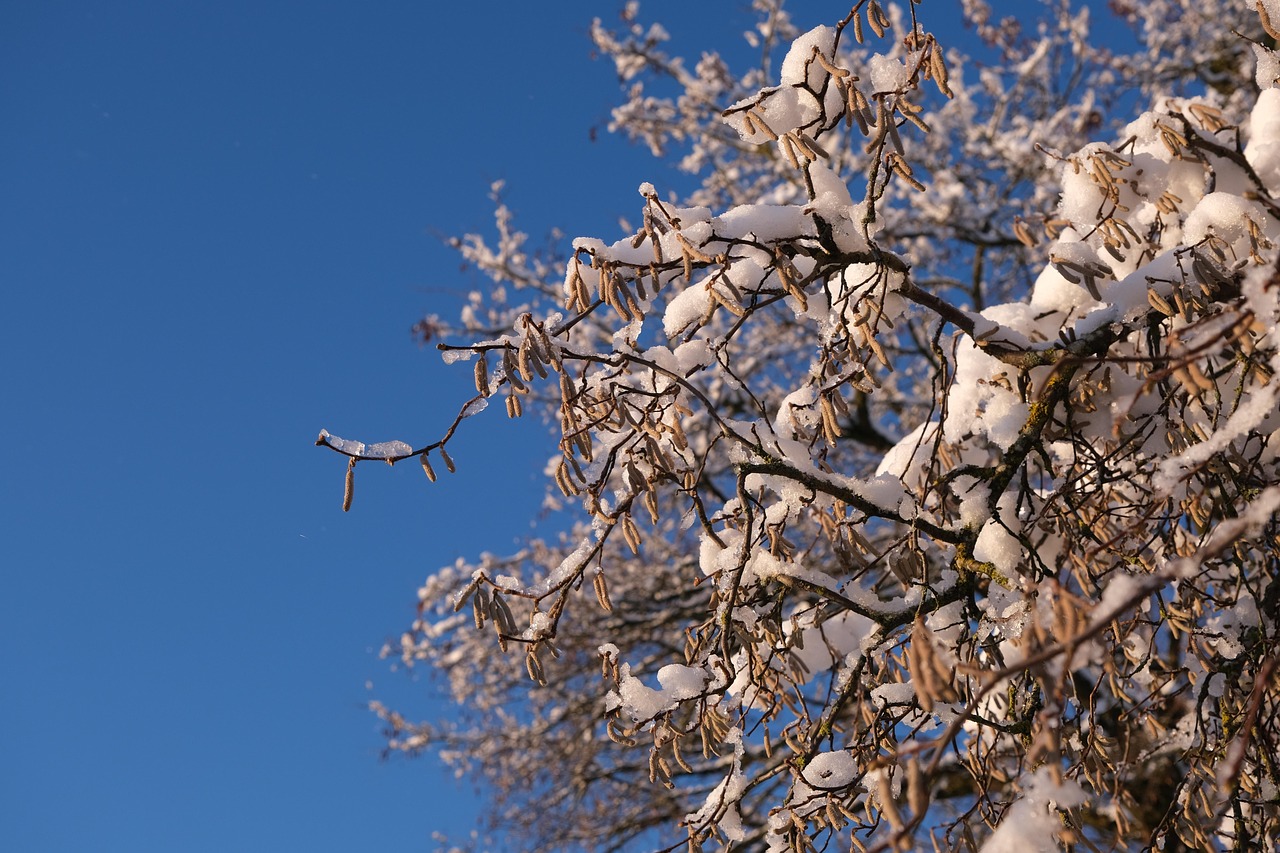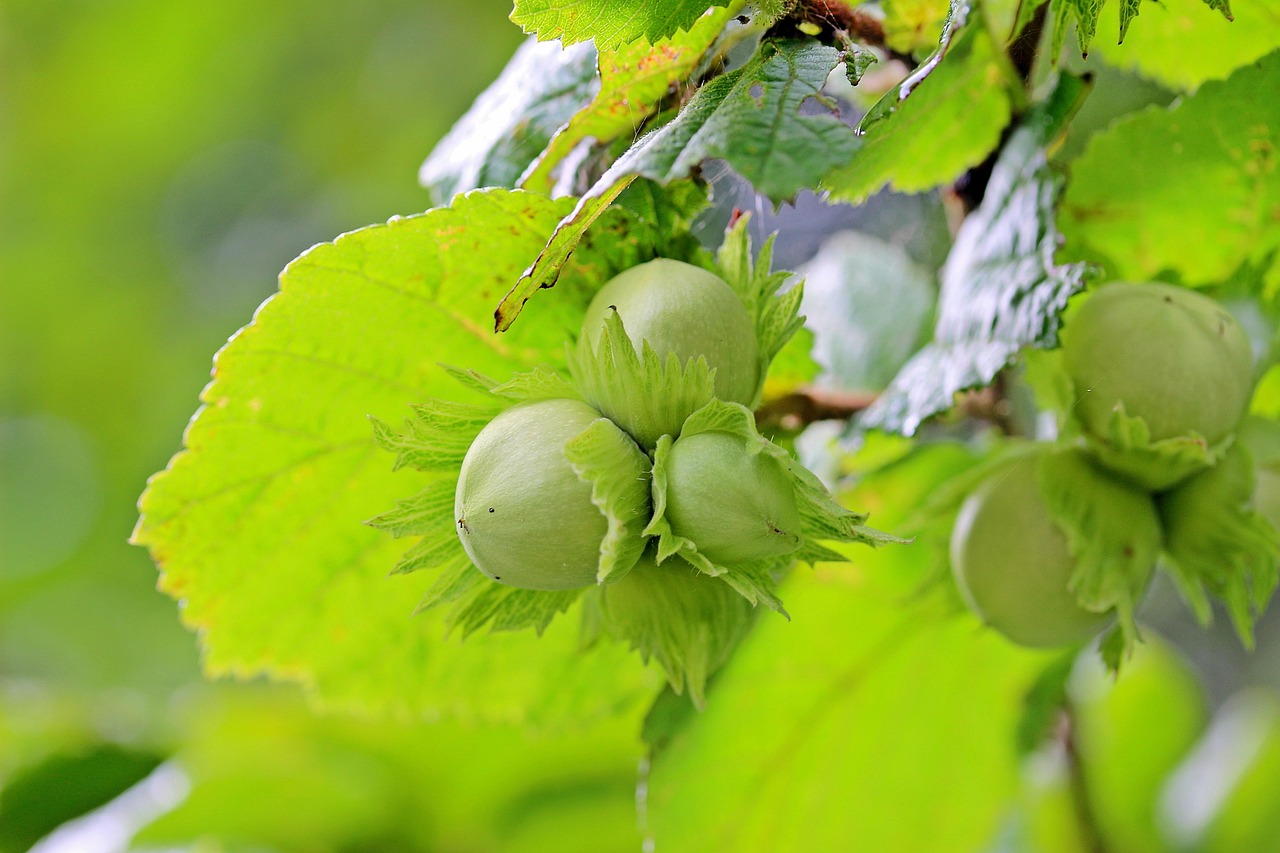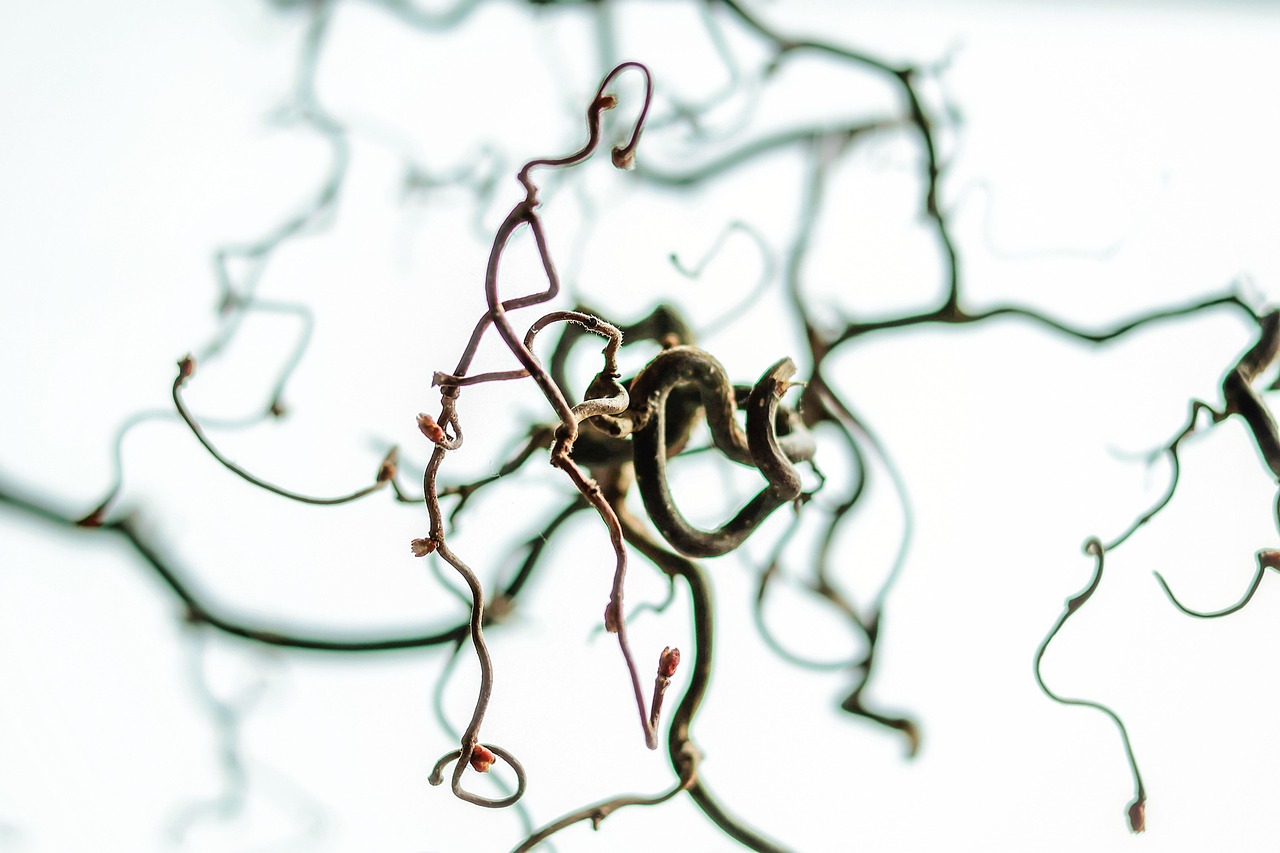Pruning hazelnut trees is essential for achieving a long-term sustainable yield. Proper techniques enhance tree health, improve nut quality, and increase overall production. Effective pruning encourages better light penetration and air circulation, which are crucial for the tree’s growth and yield.
Hazelnuts, or filberts, are increasingly popular among farmers and gardeners due to their delicious taste and numerous health benefits. These trees thrive in temperate climates and require specific care to ensure optimal growth. Pruning is one of the critical practices that contribute to the health and productivity of hazelnut trees. Understanding the right time and methods for pruning can significantly impact the long-term yield of nuts.

In this section, we will explore the importance of pruning hazelnut trees, the best practices for pruning, and the effects of pruning on tree health and nut production. By following these guidelines, growers can achieve a sustainable yield that lasts for many years.
The Importance of Pruning Hazelnut Trees
Pruning offers several benefits that are vital for maintaining healthy hazelnut trees. First, it helps in managing the shape and size of the tree. A well-structured tree allows for better light exposure and airflow, which are essential for photosynthesis and reducing disease risk. Additionally, regular pruning can lead to increased yields by promoting new growth and ensuring that older branches do not overshadow younger ones.
Another significant benefit of pruning is that it aids in disease management. By removing dead or diseased branches, growers can prevent the spread of pathogens. Moreover, pruning can help reduce pest infestations by eliminating areas where pests might thrive.

According to research from agricultural extension services, properly pruned hazelnut trees can produce up to 30% more nuts than those that are not pruned. This statistic emphasizes the importance of adopting effective pruning techniques as part of a comprehensive hazelnut management plan.
Best Practices for Pruning Hazelnut Trees
To achieve the best results from pruning, it is essential to follow certain best practices. Proper timing, techniques, and tools can make a significant difference in the effectiveness of your pruning efforts.
Timing
Timing is critical when it comes to pruning hazelnut trees. The best time to prune is during the dormant season, typically late winter or early spring before new growth begins. Pruning at this time minimizes stress on the tree and allows it to recover quickly as it enters its growing phase.

Techniques
Several techniques can be employed when pruning hazelnut trees:
- Thinning: This involves removing some branches entirely to improve air circulation and light penetration.
- Heading back: This technique shortens branches to encourage new growth and improve structure.
- Cleaning: Regularly removing dead or diseased wood helps maintain overall tree health.
Tools
Using the right tools is equally important for effective pruning. Sharp pruning shears, loppers, and saws should be used to ensure clean cuts that promote healing. Dull tools can cause unnecessary damage to the tree, leading to increased risk of infection.
The Effects of Pruning on Tree Health and Nut Production
The impact of proper pruning on tree health cannot be overstated. Healthy trees are more resilient to environmental stresses such as drought or disease. They also tend to produce higher-quality nuts, which are essential for marketability.

Pruning influences nut production by allowing the tree to focus its energy on producing fruit rather than maintaining excessive foliage. This shift leads to improved nut size and quality. Additionally, a well-pruned tree can produce nuts earlier in its life cycle, providing growers with an earlier return on investment.
| Benefit | Description |
|---|---|
| Increased Yield | Properly pruned trees can yield up to 30% more nuts. |
| Improved Nut Quality | Pruning enhances nut size and overall quality. |
| Disease Management | Removes dead/diseased branches, preventing pathogen spread. |
| Better Airflow | Improved airflow reduces disease risk and promotes growth. |
In summary, effective pruning techniques play a vital role in maintaining healthy hazelnut trees and ensuring long-term sustainable yields. By understanding the importance of timing, using appropriate techniques, and employing the right tools, growers can maximize their production potential while enhancing the overall health of their trees.
Types of Pruning Techniques for Hazelnut Trees
To achieve optimal results from pruning, it is essential to understand the different techniques available. Each method serves a unique purpose and can be adapted based on the specific needs of the hazelnut trees. The following are some of the most effective pruning techniques:
1. Thinning
Thinning is a technique that involves removing entire branches from the tree. This approach helps to open up the canopy, allowing sunlight and air to reach all parts of the tree. Thinning can lead to healthier growth and improved nut production. It is particularly beneficial for:
- Reducing overcrowding among branches.
- Improving light penetration to lower branches.
- Enhancing airflow, which helps mitigate disease risk.
2. Heading Back
Heading back involves cutting back a branch to a bud or lateral branch. This technique encourages new growth and can help manage the overall height and shape of the tree. Heading back is particularly useful for:
- Controlling the size of the tree.
- Stimulating the development of new shoots that produce fruit.
- Maintaining a balanced structure, which enhances stability.
3. Cleaning
Cleaning is the process of removing dead, diseased, or damaged wood from the tree. This technique is essential for maintaining overall tree health and preventing disease spread. Regular cleaning can help:
- Reduce the risk of fungal infections.
- Improve aesthetic appearance.
- Encourage new growth by allocating resources to healthy parts of the tree.
Tools for Pruning Hazelnut Trees
The right tools can make a significant difference in how effectively you prune hazelnut trees. Using sharp and appropriate tools ensures clean cuts, which promote healing and minimize damage. Here are some essential tools for pruning:
| Tool | Description |
|---|---|
| Hand Pruners | Ideal for cutting small branches and shoots. |
| Loppers | Used for thicker branches that hand pruners cannot handle. |
| Saws | Necessary for larger branches that require more power to cut. |
| Pruning Shears | Great for precision work and shaping smaller limbs. |
| Hedge Trimmers | Useful for shaping and maintaining the overall form of the tree. |
When using these tools, always ensure they are clean and well-maintained. This practice not only enhances their effectiveness but also reduces the risk of spreading diseases from one tree to another.
Common Mistakes to Avoid When Pruning Hazelnut Trees
While pruning is beneficial, there are common mistakes that can undermine your efforts. Being aware of these pitfalls can help you achieve better results:
- Over-pruning: Removing too much foliage can stress the tree and reduce nut production.
- Poor Timing: Pruning at the wrong time can hinder tree growth and yield. Always prune during the dormant season.
- Ignoring Tree Structure: Failing to consider the natural shape of the tree can lead to unbalanced growth and increased susceptibility to wind damage.
- Using Dull Tools: Dull tools can create jagged cuts that may invite disease into the tree.
- Neglecting Clean-Up: Leaving cut branches on the ground can harbor pests and diseases.
Avoiding these mistakes will help ensure that your hazelnut trees remain healthy and productive throughout their life cycle.
Sustainable Practices in Hazelnut Tree Pruning
Incorporating sustainable practices into your hazelnut tree pruning routine can enhance environmental health while also improving yields. Here are some sustainable practices to consider:
- Organic Methods: Use organic fertilizers and pesticides to maintain tree health without harming the ecosystem.
- Circular Pruning: This method involves selective removal of branches in a circular pattern, promoting even light distribution and reducing waste.
- Companion Planting: Planting compatible species nearby can enhance soil health and reduce pest populations naturally.
- Mulching: Applying mulch around the base of trees helps retain moisture and suppress weeds, contributing to overall tree health.
By implementing these sustainable practices, growers can ensure that their hazelnut orchards thrive for generations while minimizing their ecological footprint.
The Role of Climate in Pruning Hazelnut Trees
The climate plays a significant role in determining when and how to prune hazelnut trees. Understanding local weather patterns can help growers make informed decisions about their pruning strategies. Factors to consider include:
- Dormancy Period: In regions with cold winters, pruning should occur just before buds break in early spring.
- Disease Pressure: In humid climates, it may be beneficial to prune earlier to reduce disease risks associated with wet conditions.
- Trees’ Growth Cycle: Recognizing when your trees typically start growing can guide timing decisions for pruning activities.
Being aware of these climatic influences allows for better planning and more effective pruning practices that align with the natural growth rhythms of hazelnut trees.
Common Hazelnut Tree Diseases and Their Management
Maintaining the health of hazelnut trees is crucial for sustainable yield. Understanding common diseases that affect these trees and implementing effective management strategies can help mitigate risks. Here are some prevalent diseases in hazelnut trees:
1. Eastern Filbert Blight
Eastern Filbert Blight is a fungal disease that poses a significant threat to hazelnut orchards. It causes cankers on branches and can eventually kill the tree if not managed properly. Symptoms include:
- Dark, sunken lesions on branches.
- Wilting and yellowing of leaves.
- Premature leaf drop.
To manage Eastern Filbert Blight, growers can:
- Choose resistant hazelnut varieties when planting.
- Prune infected branches and dispose of them properly.
- Apply fungicides during wet conditions to prevent spread.
2. Powdery Mildew
This fungal disease appears as a white powdery substance on leaves, stems, and nuts. Powdery mildew thrives in warm, dry conditions and can weaken the tree if left untreated. Management strategies include:
- Improving air circulation through proper pruning.
- Applying organic fungicides as a preventive measure.
- Avoiding overhead irrigation to reduce humidity around the foliage.
3. Botrytis Blight
Botrytis Blight, also known as gray mold, affects hazelnuts at various growth stages. It can lead to significant losses if not addressed promptly. Symptoms may include:
- Brown, water-soaked spots on nuts and leaves.
- A grayish mold covering affected areas.
Management practices for Botrytis Blight include:
- Ensuring good sanitation practices in the orchard.
- Removing debris and infected plant material from the ground.
- Applying fungicides during wet seasons to protect new growth.
The Role of Soil Health in Hazelnut Tree Growth
The health of the soil directly impacts the growth and productivity of hazelnut trees. Healthy soil provides essential nutrients, supports root development, and enhances water retention. Here are key aspects to consider:
Nutrient Management
A balanced nutrient profile is vital for hazelnut trees. Key nutrients include nitrogen, phosphorus, and potassium. Conducting soil tests can help determine nutrient levels and guide fertilization practices. Some recommendations include:
- Applying organic compost or well-rotted manure to improve nutrient availability.
- Incorporating cover crops to enhance soil structure and fertility.
- Using slow-release fertilizers to provide a steady nutrient supply throughout the growing season.
Soil pH
The pH level of soil affects nutrient availability and overall tree health. Hazelnut trees prefer slightly acidic soil with a pH between 6.0 and 6.5. To manage soil pH effectively:
- Conduct regular soil pH tests to monitor changes over time.
- Add lime to raise pH or sulfur to lower pH as needed.
- Utilize organic amendments to maintain a balanced pH level.
Water Management
Proper water management is essential for hazelnut tree health. Hazelnuts require consistent moisture, especially during flowering and nut development. Here are strategies to ensure adequate water supply:
- Implementing drip irrigation systems to provide targeted watering without excess runoff.
- Monitoring soil moisture levels to avoid over- or under-watering.
- Using mulch around the base of trees to retain moisture and suppress weed growth.
Integrating Technology in Hazelnut Tree Management
The advancement of technology has significantly impacted agricultural practices, including hazelnut tree management. Utilizing modern tools can enhance efficiency and sustainability. Here are some technologies to consider:
Drones for Monitoring
Drones can be utilized for aerial surveys of hazelnut orchards, providing valuable data on tree health, growth patterns, and pest infestations. Benefits of using drones include:
- Identifying problem areas quickly for targeted interventions.
- Monitoring crop health using multispectral imaging.
- Reducing labor costs associated with manual inspections.
Sensors for Soil Monitoring
Soil sensors can provide real-time data on moisture levels, nutrient availability, and temperature. This information helps growers make informed decisions about irrigation and fertilization. Benefits include:
- Optimizing water usage by providing precise moisture readings.
- Enhancing nutrient management through accurate data collection.
- Improving overall tree health with timely interventions based on sensor data.
Agricultural Software
Various software tools are available for managing orchard operations. These applications can assist with record-keeping, scheduling maintenance tasks, and analyzing yield data. Key advantages include:
- Simplifying planning and management processes for growers.
- Providing insights into historical data for informed decision-making.
- Facilitating communication among team members involved in orchard management.
The integration of technology into hazelnut tree management practices offers an exciting opportunity to enhance productivity while promoting sustainability in orchard operations.
Advancements in Hazelnut Breeding and Their Impact on Pruning
As the demand for hazelnuts continues to grow, advancements in breeding techniques are playing a vital role in enhancing the sustainability of hazelnut production. Breeders are focusing on developing new varieties that are more resilient to diseases, pests, and climate change. Understanding how these advancements impact pruning practices can further benefit growers.
1. Disease Resistance
New hazelnut varieties are being developed with resistance to common diseases such as Eastern Filbert Blight. These disease-resistant varieties often require different pruning strategies compared to traditional ones. Here are some considerations:
- Reduced Need for Sanitation Pruning: With disease-resistant varieties, there may be less emphasis on removing infected branches, allowing for more focus on enhancing growth and productivity.
- Adaptive Pruning Techniques: Growers can experiment with different pruning techniques that may be more suitable for these new varieties, optimizing their growth patterns.
2. Improved Nut Quality
Advancements in breeding have also led to improved nut quality, which can influence pruning decisions. For instance:
- Higher Yield Potential: Varieties that produce larger and higher-quality nuts may require specific pruning techniques to maximize light exposure and air circulation around the fruiting wood.
- Focus on Fruit Production: With an emphasis on producing better nuts, pruning strategies may shift towards enhancing the development of fruiting spurs rather than overall tree structure.
3. Climate Resilience
Breeders are also developing hazelnut varieties that are more tolerant to varying climatic conditions. This resilience can affect pruning practices in several ways:
- Adaptation to Weather Variability: Trees that can better withstand drought or extreme temperatures may require adjustments in pruning timing and techniques to ensure optimal health and yield.
- Longer Growing Seasons: Climate-resilient varieties may extend the growing season, leading to shifts in when pruning should occur to align with the trees’ growing cycles.
The Economic Impact of Pruning Practices
Effective pruning not only enhances tree health and nut production but also has significant economic implications for hazelnut growers. Understanding these impacts can motivate growers to adopt best practices:
1. Increased Profitability
By implementing proper pruning techniques, growers can achieve higher yields and better-quality nuts, directly impacting profitability. Some key factors include:
- Higher Market Prices: Improved nut quality often leads to better prices in the market, increasing overall revenue.
- Cost-Effective Practices: Reducing the incidence of disease through strategic pruning can lower costs related to pest management and loss of production.
2. Labor Efficiency
Properly managed orchards require less labor over time. Efficient pruning reduces the need for extensive maintenance and allows workers to focus on other essential tasks. Benefits include:
- Reduced Labor Costs: Streamlining pruning practices can lower labor expenses, contributing to overall profitability.
- Improved Worker Productivity: Well-pruned trees make it easier for workers to manage the orchard, enhancing productivity across various tasks.
3. Long-Term Sustainability
Sustainable practices contribute not only to environmental health but also to the economic viability of hazelnut production. Growers who prioritize sustainability through careful pruning and management can enjoy long-term benefits, including:
- Consistent Yields: Healthy trees produce more consistently over time, providing predictable income streams for growers.
- Market Demand for Sustainable Products: Consumers increasingly seek sustainably produced nuts, allowing growers to tap into premium markets.
Final Thoughts
The journey towards achieving a sustainable yield of hazelnuts is complex and multifaceted. Effective pruning plays a critical role in ensuring that hazelnut trees remain healthy and productive throughout their lifecycle. By understanding various pruning techniques, managing soil health, leveraging technology, and embracing advancements in breeding, growers can optimize their practices for both immediate and long-term benefits.
The integration of sustainable practices not only enhances tree health but also supports the economic viability of hazelnut production. As growers adapt to changing climates and consumer preferences, the importance of informed decision-making in all aspects of hazelnut management becomes increasingly evident.
Through continuous learning and adaptation, hazelnut producers can ensure their orchards thrive while contributing positively to the environment and society as a whole. The future of hazelnut cultivation looks promising, driven by innovation and a commitment to sustainable practices.
